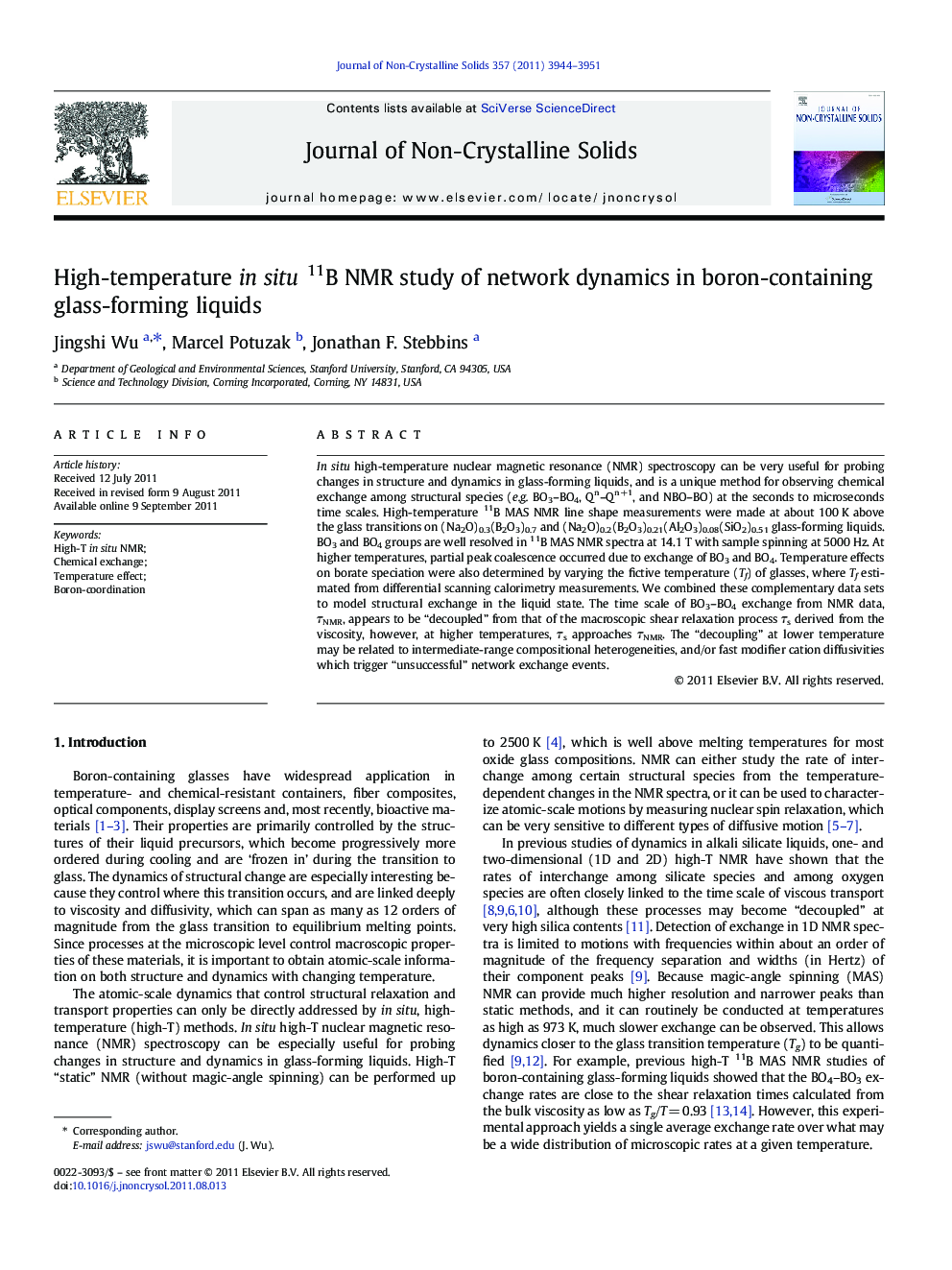| کد مقاله | کد نشریه | سال انتشار | مقاله انگلیسی | نسخه تمام متن |
|---|---|---|---|---|
| 1481837 | 991545 | 2011 | 8 صفحه PDF | دانلود رایگان |

In situ high-temperature nuclear magnetic resonance (NMR) spectroscopy can be very useful for probing changes in structure and dynamics in glass-forming liquids, and is a unique method for observing chemical exchange among structural species (e.g. BO3–BO4, Qn–Qn+1, and NBO–BO) at the seconds to microseconds time scales. High-temperature 11B MAS NMR line shape measurements were made at about 100 K above the glass transitions on (Na2O)0.3(B2O3)0.7 and (Na2O)0.2(B2O3)0.21(Al2O3)0.08(SiO2)0.51 glass-forming liquids. BO3 and BO4 groups are well resolved in 11B MAS NMR spectra at 14.1 T with sample spinning at 5000 Hz. At higher temperatures, partial peak coalescence occurred due to exchange of BO3 and BO4. Temperature effects on borate speciation were also determined by varying the fictive temperature (Tf) of glasses, where Tf estimated from differential scanning calorimetry measurements. We combined these complementary data sets to model structural exchange in the liquid state. The time scale of BO3–BO4 exchange from NMR data, τNMR, appears to be “decoupled” from that of the macroscopic shear relaxation process τs derived from the viscosity, however, at higher temperatures, τs approaches τNMR. The “decoupling” at lower temperature may be related to intermediate-range compositional heterogeneities, and/or fast modifier cation diffusivities which trigger “unsuccessful” network exchange events.
► Boron coordination was quantified for glasses with varying fictive temperatures.
► High-T in situ11B MAS NMR data reveal dynamics of structural exchange above Tg.
► We simulated changes in BO3–BO4 exchange rates with temperature from NMR data.
► This exchange appears to be “decoupled” from shear relaxation rates at Tg/T < 0.85.
► The “decoupling” at lower T may be related to fast modifier cation diffusivities.
Journal: Journal of Non-Crystalline Solids - Volume 357, Issue 24, December 2011, Pages 3944–3951